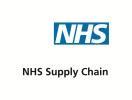Online auctions, where suppliers bid to provide a group of trusts with a standardised product, can result in huge savings. By Daloni Carlisle

Anyone who has sold anything on eBay will know the frisson of an online auction, watching the last minute bids coming in and the price rising.

How much more exciting, then, was the e-auction held this year to provide examination gloves to seven NHS trusts? It was, say all involved, unexpectedly thrilling to watch the prices tumble and see £400,000 slashed by asking suppliers to compete against each to offer the lowest price for a given quality.
The e-auction was a collaboration between NHS Supply Chain and the Working Together programme, which comprises seven NHS acute trusts in South Yorkshire, Mid Yorkshire and North Derbyshire that aim to:
- act together to improve quality, safety and the patient experience;
- deliver safe and sustainable local services; and
- make collective efficiencies.
Cart before the horse
But to start with the e-auction is perhaps putting the cart before the horse. As Mike Pinkerton, chair of Working Together and chief executive of Doncaster and Bassetlaw Hospitals Foundation Trust, points out, the auction was the end of a story, not the beginning.
Working Together is about making things better and, in any NHS trust, procurement and rationalising the range of products bought and used is a must do. In June, Lord Carter’s interim review of operational productivity suggested £1bn a year could be saved if trusts used best practice in procurement.
But as anyone who has tried to rationalise the product range or club together with other organisations to deliver efficiencies will know, this is easier said than done.
Different system
That is where Working Together is different. Yes, it has the backing at chief executive level, but perhaps even more importantly it has executive medical buy-in and a robust, transparent process for reaching consensus about a product among frontline clinicians. It is a process that is delivering results.
Des Breen, medical director of Working Together and associate medical director of Sheffield Teaching Hospitals FT, explains: “The seven medical directors of the trusts have developed a clinical reference group and are committed to working together. We have developed a decision flow diagram that takes a product through a series of questions to decide how contentious it is, how it affects patients, and who are the stakeholders.
‘This agreement delivers buying power and with it the ability to achieve a good price’
“That then helps us decide which products to tackle, identifies any patient safety and quality issues and tells us who and how we need to consult.”
This process allows the collaborative to select a high quality product that can be evaluated in one of the trusts, with all seven agreeing to take up the end recommendation. This agreement delivers buying power and with it the ability to achieve a good price.
Exam gloves was the first product line to go through the process. “They are relatively uncontentious,” says Dr Breen. “We were able to reach a consensus around them fairly quickly.” The process took three months, end to end.
That consensus was for a high quality, sensitive and strong glove, with trusts retaining the right to source alternatives if levels of allergic reactions were unacceptably high.
With the spec in place, the trusts went to auction, facilitated by NHS Supply Chain. On offer was a 12 month contract to supply all seven trusts with a single type of examination glove. It was winner take all, with price as the only factor.
Working together: the participating trusts
- Barnsley Hospital Foundation Trust
- Chesterfield Royal Hospital FT
- Doncaster and Bassetlaw Hospitals FT
- Mid Yorkshire Hospitals Trust
- Rotherham FT
- Sheffield Children’s FT
- Sheffield Teaching Hospitals FT
“We complemented each other really well,” says David Pierpoint, managing director for customer engagement for NHS Supply Chain. “Working Together standardised their requirements for examination gloves across the region and brought to us their committed demand. We were able to get the best prices from the market through our e-auction tool.”
Bringing the suppliers on board was fundamental to the success of the project, says Mr Pierpoint. “Involving suppliers right from the outset, combined with a united front from clinicians, gave the suppliers more confidence in the process, which enabled us to create more commercial tension in the market.”
Intense preparation
Tony White, procurement director of Sheffield Teaching Hospitals and procurement lead for Working Together, says: “The e-auction itself took less than a day but there was quite an intense period of preparation beforehand.”
Suppliers had seen the spec, prepared their offers based on the quality criteria and volume, and on the day came in with their offers. Each could see the others’ bids and they could then set about undercutting to offer the lowest price. It was, says Mr White and Mr Pinkerton who watched the bidding unfold, unexpectedly exciting.
At the start, the seven trusts were spending £2.1m annually with eight suppliers, with 78 per cent of the spend in two trusts. Today, all seven organisation are committed to a single product from one supplier, who was able to deliver a saving of £400,000 - or 24 per cent - as a result.
‘We have absolute concrete evidence of savings flowing through from our processes’
As Mr Pinkerton says: “Working Together is already in the vanguard of implementing key aspects of the Carter reforms and we have absolute concrete evidence of savings flowing through from our processes.”
So what next? The programme’s procurement stream has five product lines either going through the process or out the other end. In June, medical pulp products (bed pans and the like) delivered a 15 per cent saving of £100,000 across the seven trusts. Next up are medical wipes (a £1m spend), sterile gloves and selected dressings.
Collaborative procurement
“We have a forward production line stretching out into the future,” says Mr Pinkerton. “We will be using a variety of methods and processes that Dr Breen and others have developed to make sure we get high quality products at the absolute best price.”
Delivering these kinds of savings based on the kinds of processes developed by Working Together in partnership with NHS Supply Chain does require a high degree of trust and a high degree of leadership, both managerial and medical.
“We have here a group of trusts and clinicians who have a set of tools that means they can trust each other’s decision making,” says Mr Pinkerton. “This is not a procurement exercise. It is about trust.”
Dr Breen adds: “There is the failsafe of an appeals process.”
Mr White is clear that Working Together is indeed working together in a way that he has rarely seen in other collaborative procurement exercises.
‘The fact that we were able to give suppliers a commitment about the volume - that was new’
“The e-auction technique has been used in the NHS before, although it is underused,” he says. “The fact that we were able to give suppliers a commitment about the volume - that was new. I think this is an important point for other regions. How many trusts can you actually corral into a deal like this? If you are looking across a region of 30-40 trusts, most of them will fall away before a deal is struck.
“The scale we are operating at - seven trusts - is less than 4 per cent of the market. It is big enough to have some muscle but small enough to have some cohesion.”
Dr Breen says clinical engagement is also crucial to success. “You need the most senior clinical buy-in possible and you need to use pre-determined decision making mechanisms to decide who and how to consult. You cannot have one group because the stakeholders for every product are different.”
For example, disinfectant wipes must involve infection control nurses but the same nurses will not have an interest in bedpans.
Higher contention
The items tested so far are high volume, low contention. Is there scope to start work on the lower volume, higher contention end of the spectrum? Prosthetics, maybe, or heart valves? Quite possibly, says Dr Breen, although maybe not in this collaborative.
“When we look at the profile of the seven participating trusts then there is not a common spend at the high end,” he says. “The high cost, low volume spend tends to be centred around the teaching hospital. So for this we are collaborating with the Shelford Group of Hospitals - for example, across the Shelford Group, orthopaedics represents a worthwhile combined spend.”
‘Large scale standardisation is feasible but you need to start with the needs of the patient’
Mr Pierpoint sums up. “Working Together has proved that large scale standardisation is feasible if approached in the right way, but you need to start with the needs of the patient and not procurement.
“The Carter review has raised a number of challenges for procurement in the NHS and it has highlighted the need to standardise and rationalise the amount of products used in hospitals.
“What’s clear to us is that the challenge is not just a procurement one but one of winning hearts and minds by involving nurses and clinicians from the outset. However, this must be supported by strong leadership from hospital boards if the efficiency goals are to be achieved.”
Topics
- BARNSLEY HOSPITAL NHS FOUNDATION TRUST
- CHESTERFIELD ROYAL HOSPITAL NHS FOUNDATION TRUST
- DONCASTER AND BASSETLAW TEACHING HOSPITALS FOUNDATION TRUST
- East Midlands
- Finance
- Innovation
- MID YORKSHIRE HOSPITALS NHS TRUST
- Procurement
- SHEFFIELD TEACHING HOSPITALS NHS FOUNDATION TRUST
- Technology and innovation
- THE ROTHERHAM NHS FOUNDATION TRUST
- Yorkshire and the Humber



























No comments yet